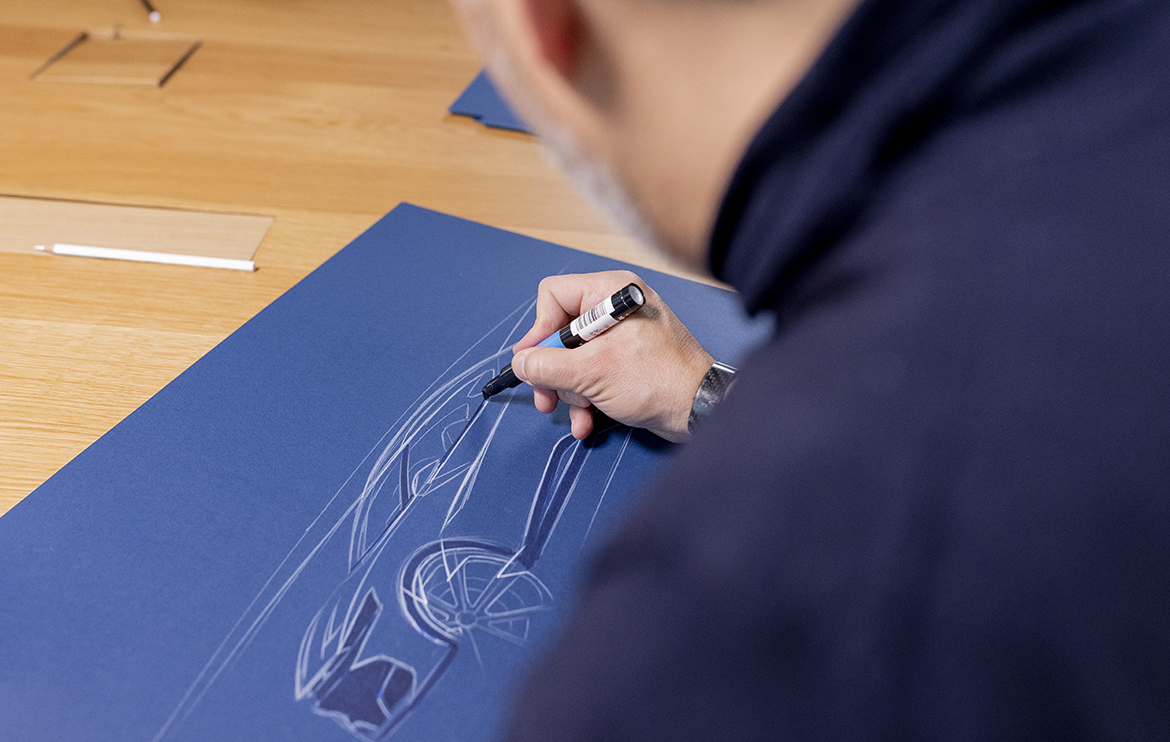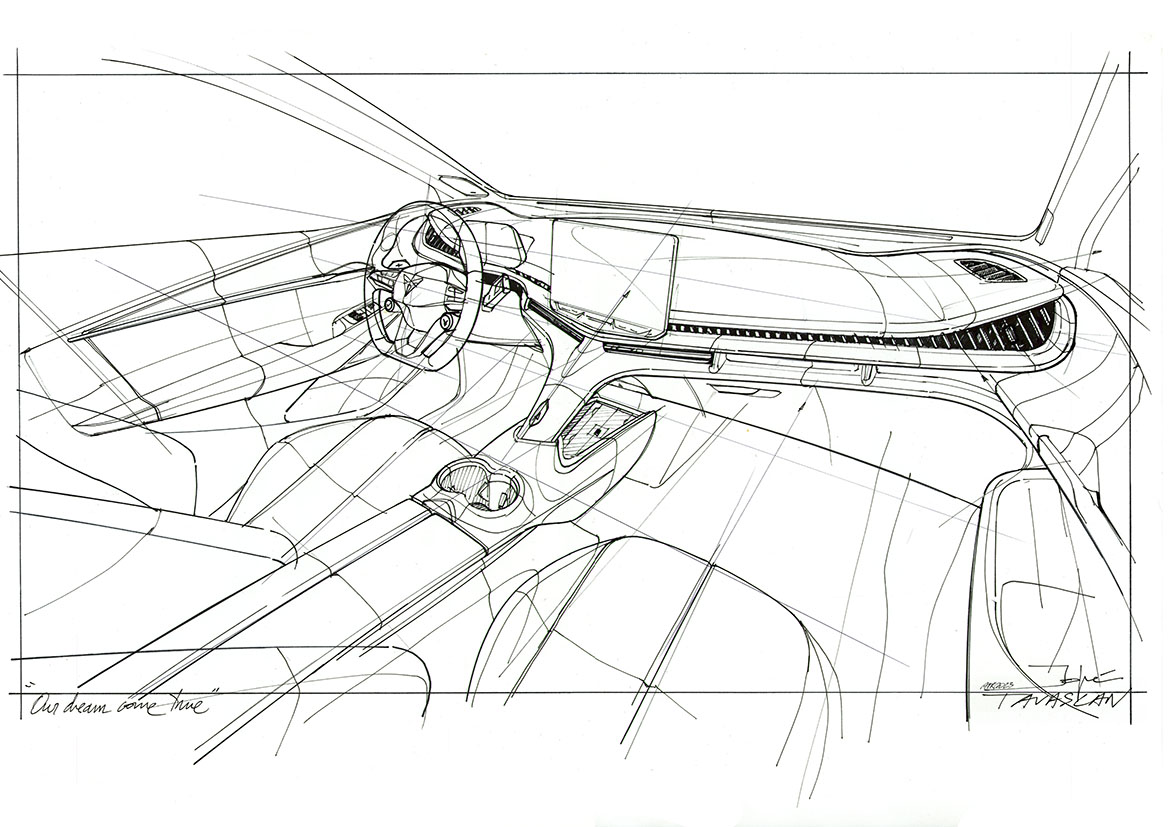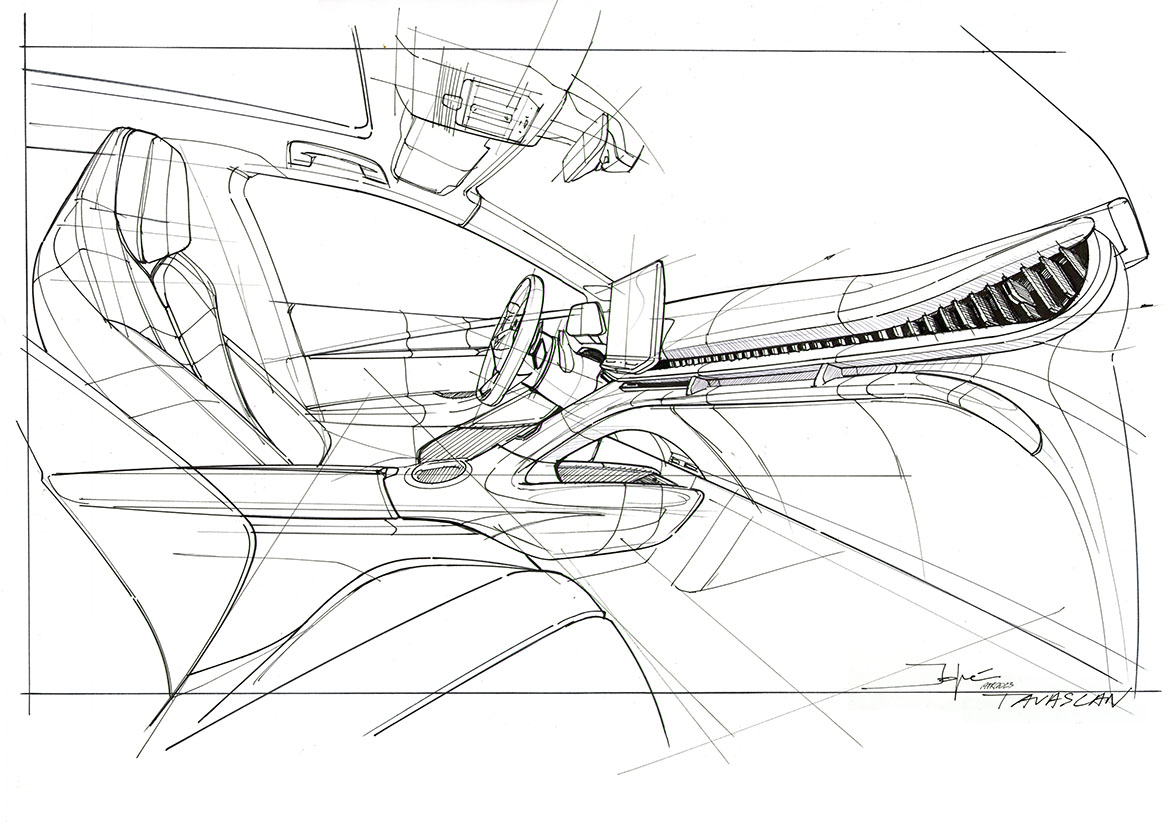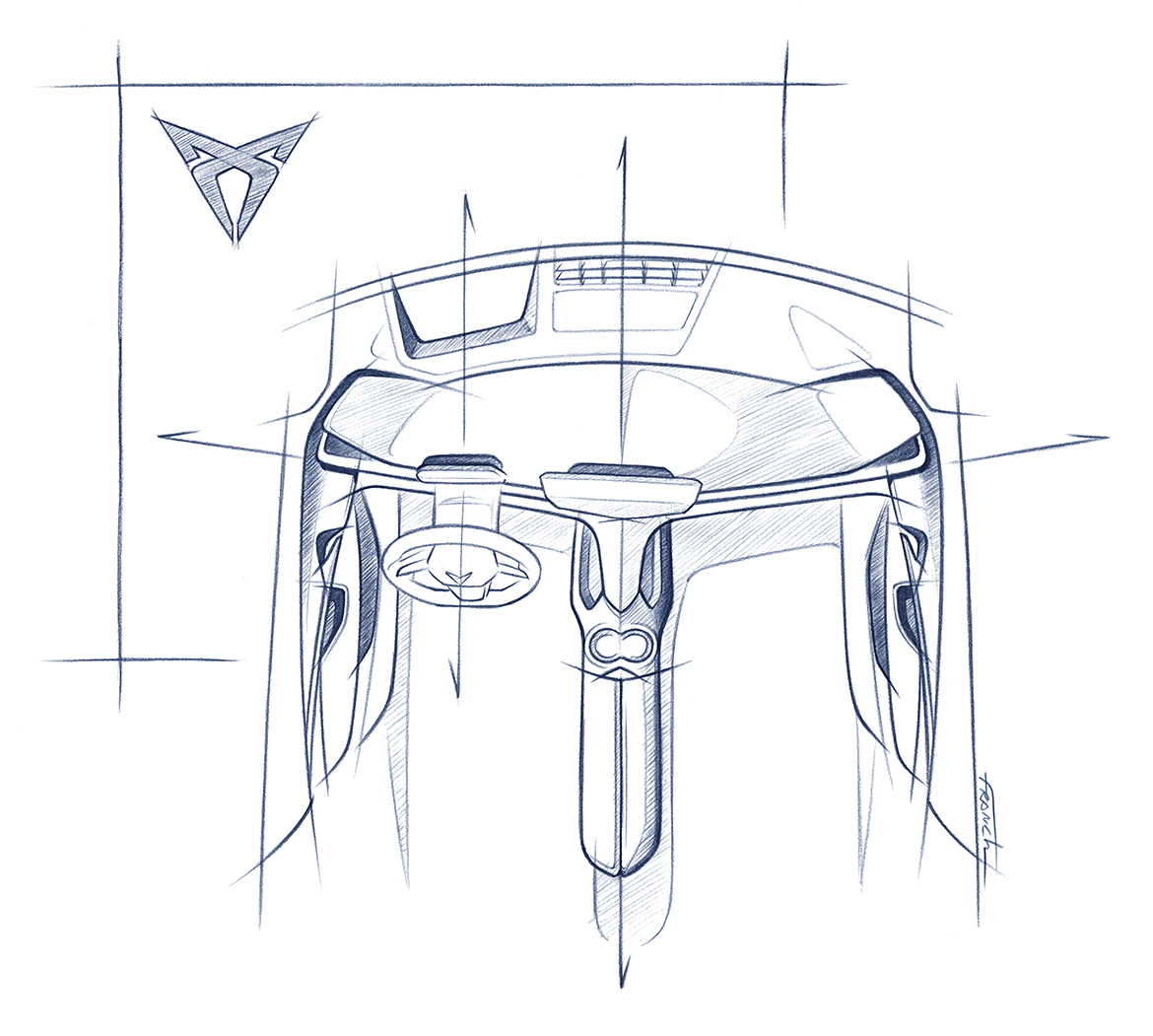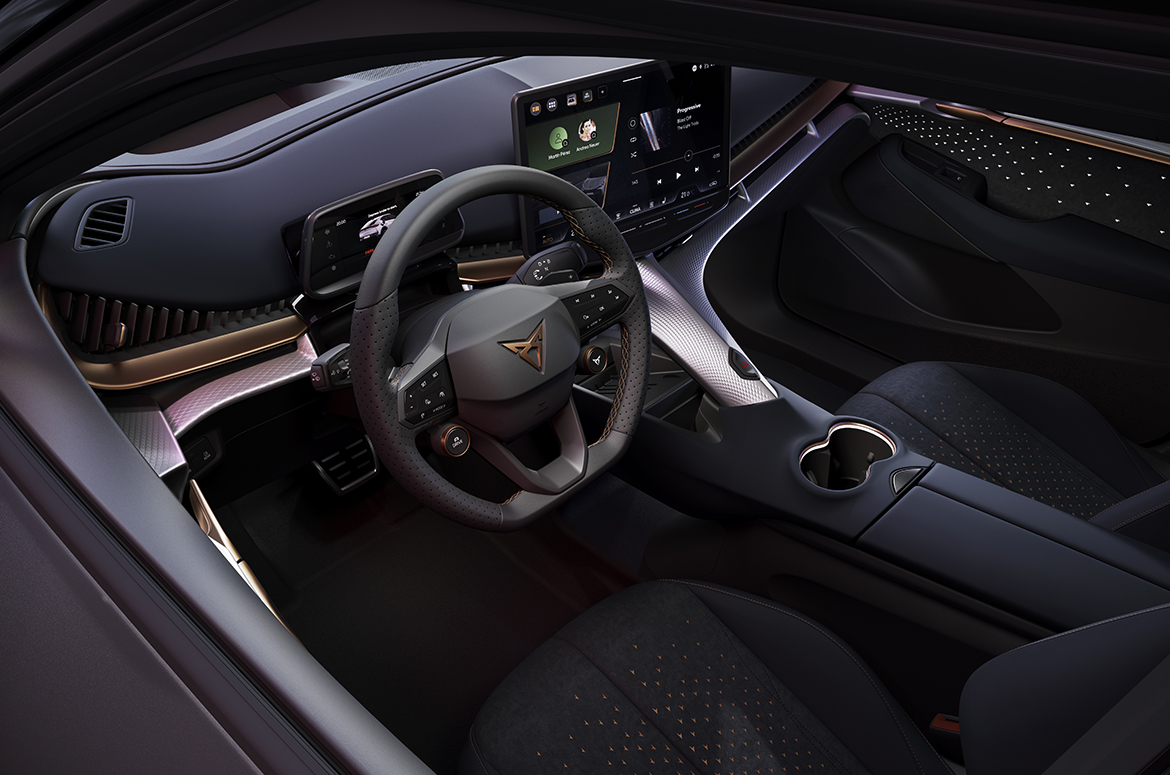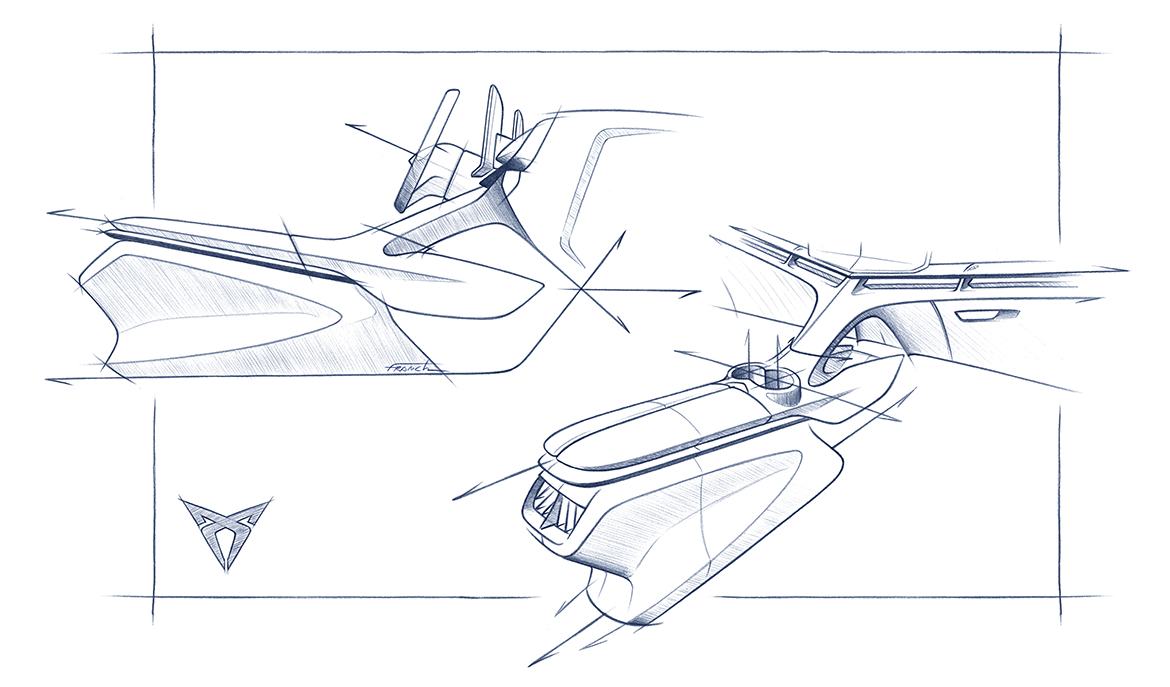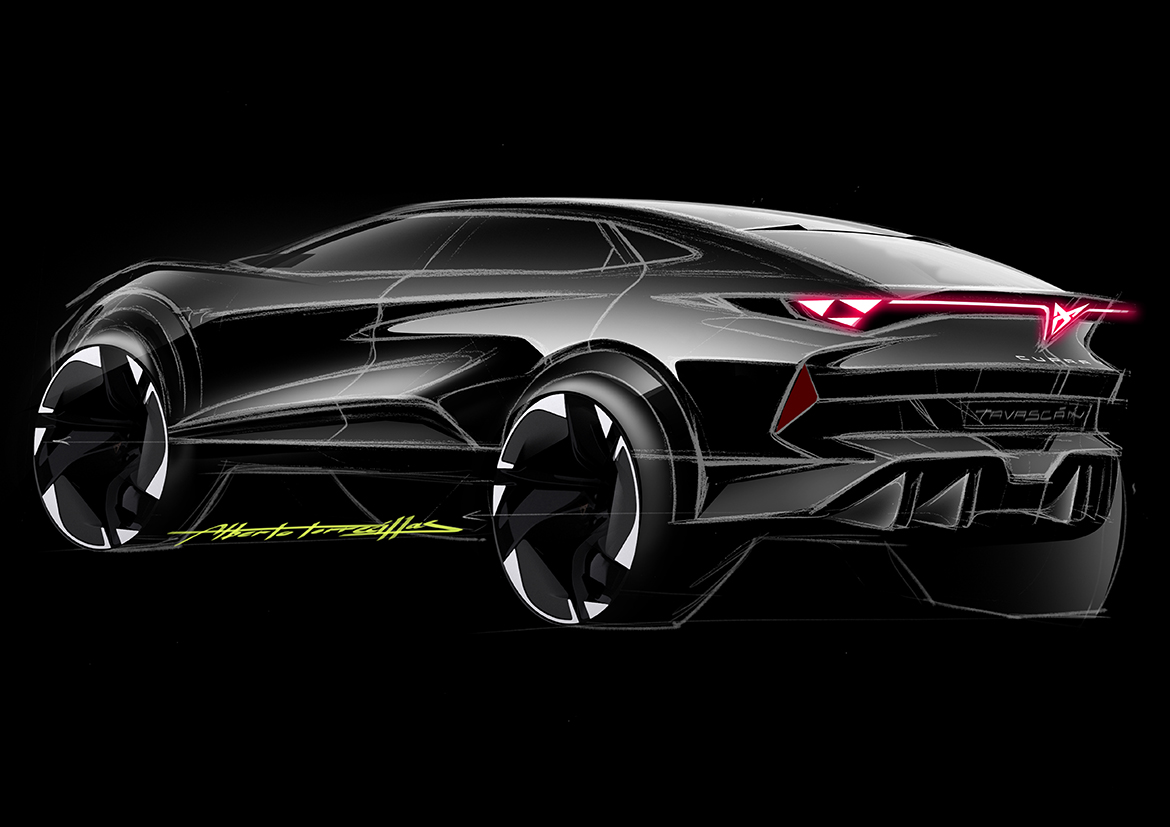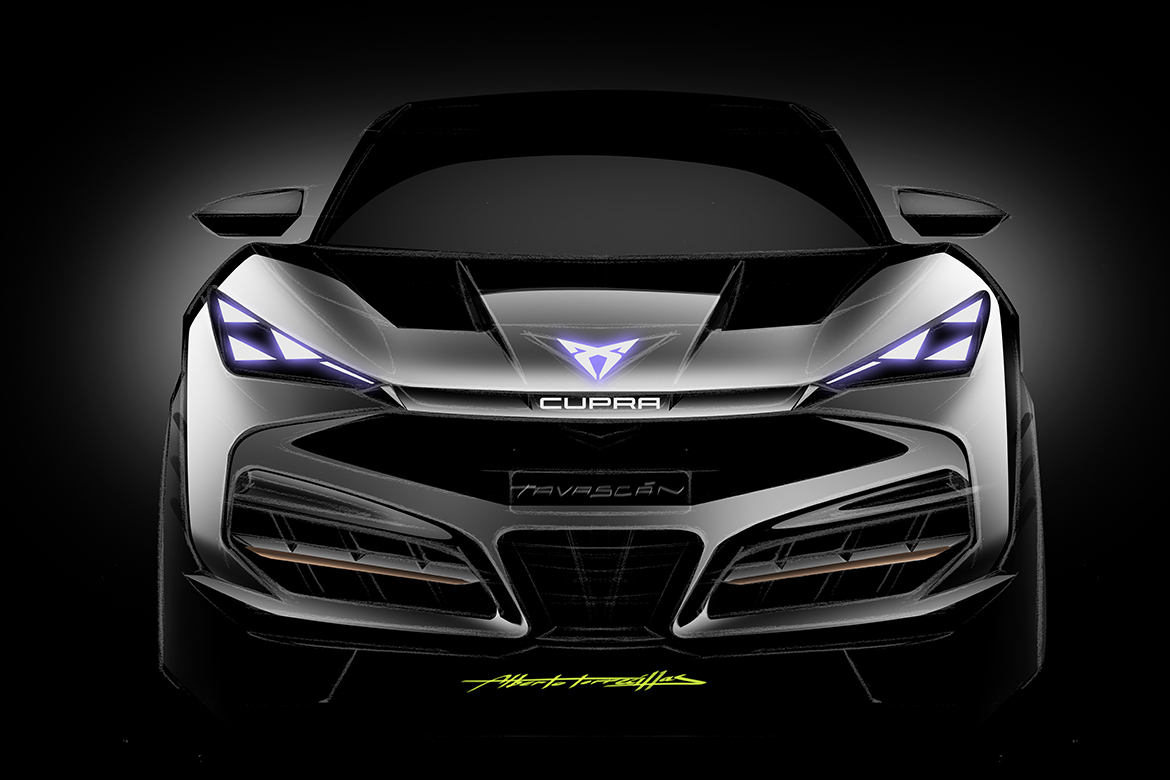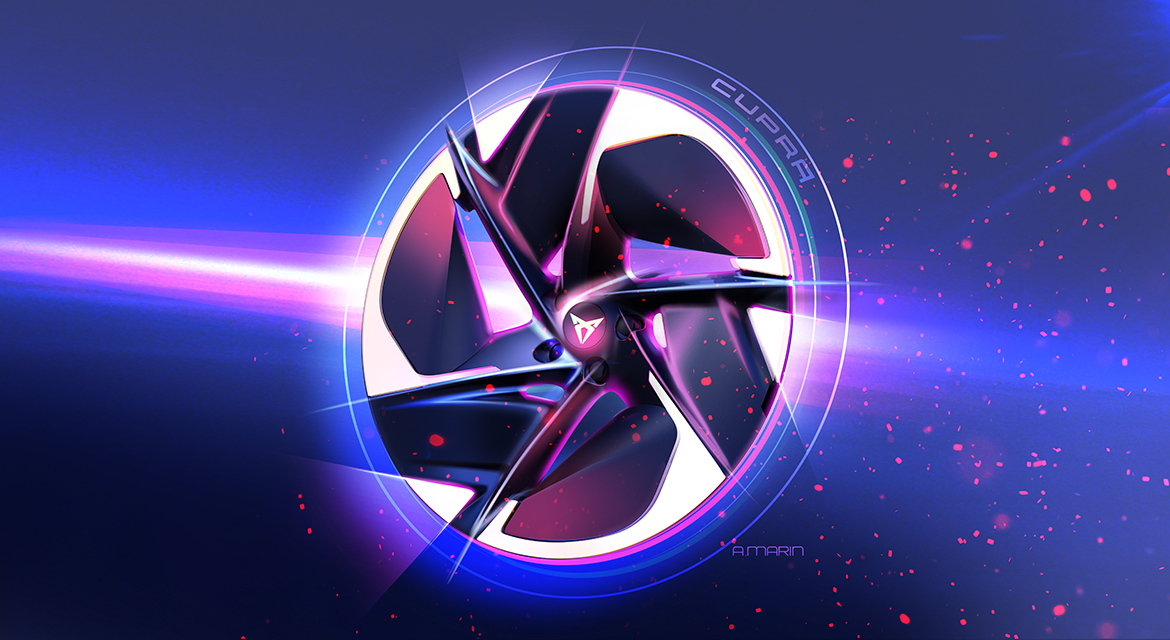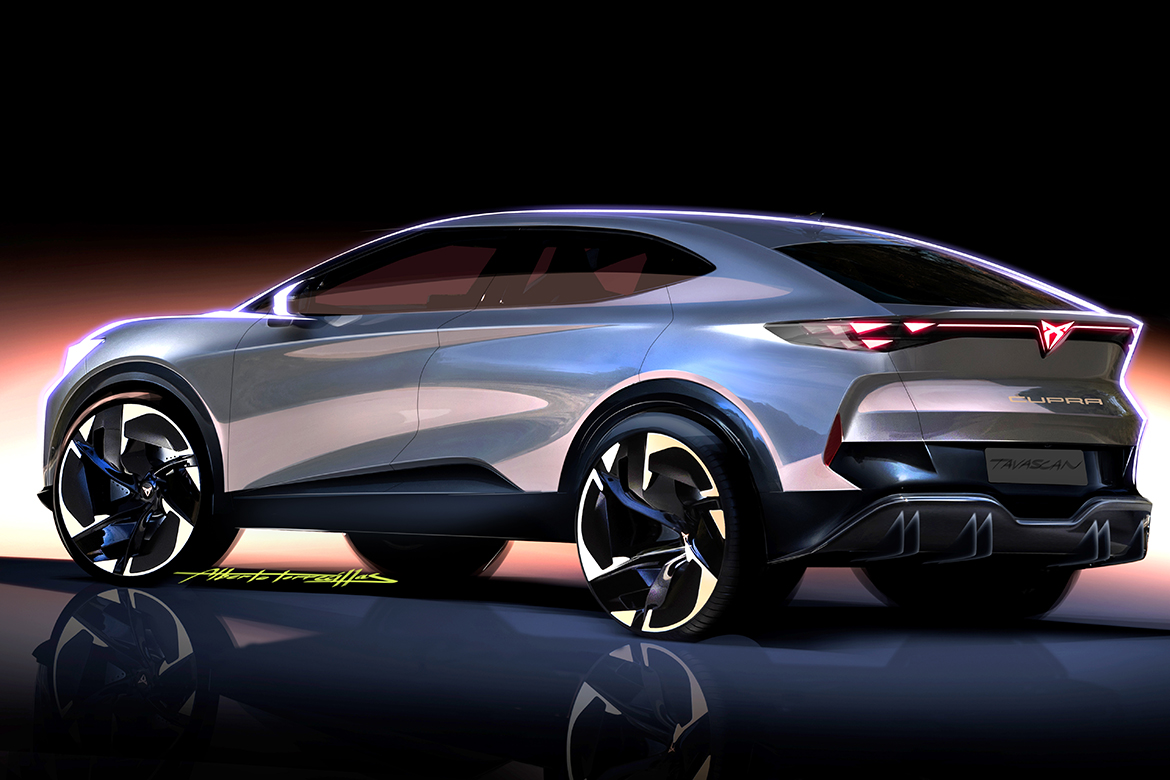Derived directly from the concept car of the same name unveiled in 2019, the Cupra Tavascan comes in its production version retaining its 100% electric coupe SUV architecture. Designed and engineered in Barcelona, the Tavascan will be produced at the Volkswagen Group’s plant in Anhui, China. “With its progressive and emotional approach, the Tavascan brings unconventional styling to the coupe SUV segment,” said Jorge Díez, Director of Design at Cupra. “It is a new, bold and organic interpretation of electric performance, built on strong lines and an athletic, determined appearance.”
The front end presents the design language of a new generation of models characterised by an aggressive, mysterious look and a wealth of sophisticated details. The new three-triangle light signature of the front headlamps stands out. The Matrix function of the LED headlamps provides a fully automatic lighting system that avoids dazzling oncoming and oncoming vehicles. The so-called ‘Cupra Lighting Concept’ makes the electric coupé SUV immediately recognisable. The design is enhanced by the illuminated logo, positioned on the bonnet with its deep sculptural surfaces. Tavascan is one of the first European production models to have its logo illuminated.
When looking at the side view of the Tavascan, the athletic and sporty proportions jump out at you. A design that emphasises the performance and sensation of speed of the electric coupé SUV, thanks to a styling language that extends the body muscles in a wedge that runs directly from the ‘shark nose’ front towards the tailgate. Add to this the ‘helmet’ concept, with the shiny black A-pillar connecting the windscreen to the side glass, generating a panoramic effect similar to that of a racing driver’s visor, and the performance aspect increases even further.
The sculpted lines of the exterior have been carried into the interior of the car. The element around which the unconventional design of the cabin revolves is the backbone, a structural element around which the entire cabin is built and which helps define the character of the floating elements. This backbone connects the body of the centre console to the dashboard, becoming a sculptural, structural and architectural element that lends a feeling of lightness. The seats add character to the interior thanks to the choice of sustainable materials: fabric – with up to 90 per cent recycled polyester – or microfibre – with up to 50 per cent recycled microfibre. In addition to the cockpit for digital instrumentation, there is also a large 15-inch central screen for driver-oriented infotainment.






